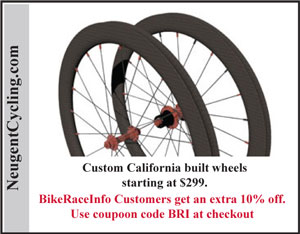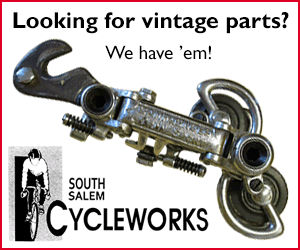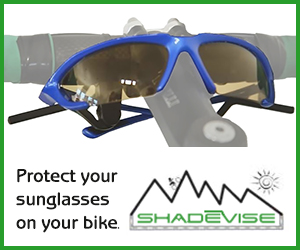

The Long Story Behind the Bankruptcies of Performance & Nashbar
Part 2: How Mail-Order Started & Grew
by John Neugent
Tech articles | Commentary articles
Performance & Nashbar Bankruptcies Stories: Part 1 | Part 3
John Neugent probably knows more about bicycle wheels than anyone else alive. Maybe more about bikes as well. He's spent his life in the bike business, at every level. He now owns Neugent Cycling, a firm devoted to delivering world-class equipment at the lowest possible price. If you are in the market for a set of wheels, please, check out John's site. He really knows his stuff. —Chairman Bill

John Neugent

Les Woodland's book Cycling's 50 Triumphs and Tragedies: The rise and fall of bicycle racing's champions is available as an audiobook here. For the print and Kindle eBook versions, just click on the Amazon link on the right.
John Neugent writes:
From my previous article, it’s easy to see that most of retail pricing is due to the costs of distribution. In fact many of the great retailers, like Costco and Walmart, focus mostly on distribution costs. Both work on gross profit margins of about 20%. That’s an astounding number. It means if something costs them $1, they sell for $1.25. Also consider they can demand the lowest prices from their vendors, so their costs are as low as or lower than most distributor costs.
I worked for a distributor that was the major suppler the mass market for bicycle accessories. In the early ’80s our computer system (long before most businesses had computers) were linked into the Walmart computers in real time, and our primary job was to keep their inventory at the proper levels in all of their warehouses. That was a huge competitive advantage at the time.
The bike industry is relatively small. Historically there have been a lot of middle men, raising retail pricing. And that brings up the question of why there are middle men to begin with. Imagine you are an Italian manufacturer and know little of the US Market. You need someone with the ability to sell your products in a market you know little about. In the ’60s and early ’70s there were no ways to market to consumers because there were no magazines (or very few) to advertise with. So for the manufacturers the distributor was “the customer,” the deal maker. For the distributor, the retailer was the customer. There was little or no connection between the consumer and manufacturer. That all started changing in the early ’70s as the market for high end products developed. Consumer magazines began popping up enabling not only manufacturers but also retailers to reach large markets. I believe it was in the early ’80s that Performance started. They initially focused on selling indoor trainers, but soon expanded their product lines.
Most distributors at that time, with the exception of Schwinn, were relatively small, and mostly focused on the juvenile and family market. Most owners didn’t even ride bikes, or if they did, didn’t use them for competition or for staying fit. This, in addition to the newly created magazines, offered an opportunity. By selling into the larger national market instead of regional markets, they could take advantage of niches not available to regional markets.
In addition, because of their sales volume, they could buy at distributor cost, cutting out one layer. Bike shops at the time thought they were working on very low profit margins, but they weren’t. One consumer magazine, Bicycle Guide, even had a policy of not running ads for “mail order” companies, claiming they had unfair advantages.
Performance, at the time, also had a full-blown product development department and would develop house-branded products in both Europe and Asia, which reduced the cost on those products by 20–50%, often buying the exact, or almost exact, same products from the same manufacturers as the name brands. So, for example, a tube that would retail for $8 in a shop they could sell for $3 and still make a good profit.
At the same time, Performance had their catalog, which I was told, had a mailing of about eight million copies a year. They would even charge vendors for being in the catalog, accurately arguing that being in the catalog was a good advertisement.
Then came the Internet, and everyone, including me, thought they were ideally positioned to take advantage of it.
In the next installment, how the wheels fell off.
John Neugent was was one of the first to establish quality hand building in Taiwan around the turn of the century. He now owns Neugent Cycling, a firm devoted to delivering world-class equipment at the lowest possible price.
.









